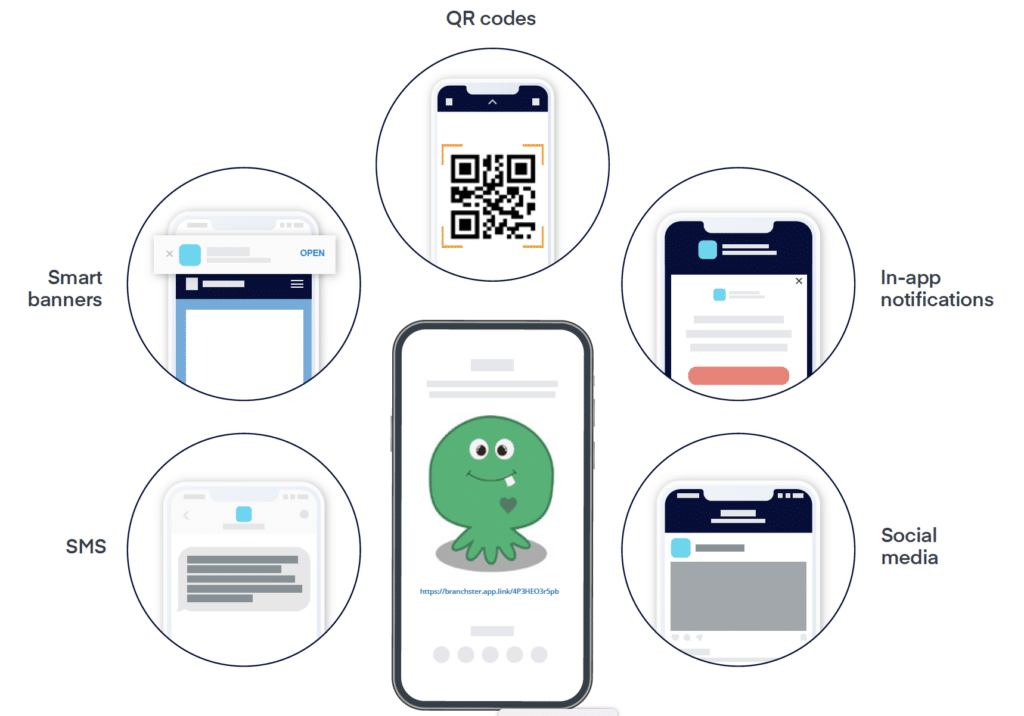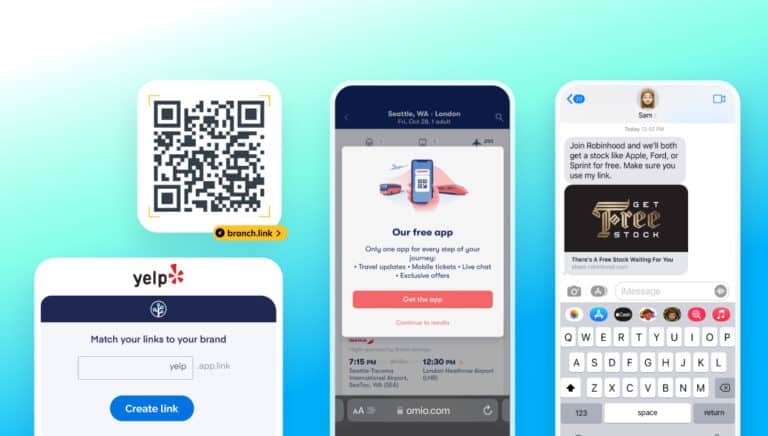User experience can make or break mobile growth. The typical mobile app is deleted from a user’s device three days after install with an overall abandonment rate of 77%. So, the onboarding process is an extremely important part of any new user’s journey. Onboarding should focus on simplifying complexity, limiting the number of steps, and getting users to their “aha!” moment as soon as possible.
Deep links help with building a great onboarding experience, but they are also a crucial component of quality mobile apps. Deep links have the potential to supplement the user experience, enhance app discoverability, increase downloads and retention, and even drive revenue. This makes them valuable from both a marketer and user standpoint. In a world without deep links, users trying to find the right destination suffer navigational headaches, and brands see less return on their mobile app investments.
With deep links, journeys are built for your users from campaign to app. This ensures a targeted, personalized experience. Marketing and product teams alike can leverage deep links in order to direct users to the appropriate destination, tailoring the user journey based on intent.
What are deep links anyway?
A deep link is a link that takes you to specific, relevant content rather than a generic homepage. People interact with deep links all the time. In fact, most web links are deep links since they take users directly to the content they requested.
Deep links also exist for mobile apps and work much the same way. Once deep links are set up, marketers can use those links across many different channels. The most common channels are email, ads, QR codes, smart banners, in-app notifications, and social media.

Deep linking benefits
Deep links provide marketers with a number of profound benefits.
Boost lifetime value
A seamless deep linking experience brings users to the exact content they desire, which increases revenue, loyalty, and lifetime value (LTV) compared with those that are brought to a generic landing page.
Expand your acquisition funnel
Deep links open the door for personalized app invites or incentivizing users with custom promotional offers. You can also widen your audience by using multiple channels; this way, you’ll have more opportunities to bring users into your acquisition funnel.
Higher retention and engagement
With deep links, you can create higher engagement, better retention, and improved return on investment (ROI) by delivering users to relevant app content. Also, this reduces the risk that users will fall out of the marketing funnel.
Deep linking best practices
Now that you know what deep links are and why they are so important to use, here are some best practices to make your deep linking user experience a successful one.
1. Configure correctly for a seamless user experience
To make the user experience with deep links as seamless as possible, you’ll want to ensure deep links have the correct in-app configuration to support routing. This includes not displaying interstitial pages or requiring any logins. In addition, you must check that any redirect fallbacks are set up correctly with the desired behavior, no matter if a user has the app installed or is using multiple types of devices.
Establishing proper setup and fallbacks guarantee your users will always be routed to the right content regardless of which platform or link they select.
2. Leverage deep links across multiple channels to drive acquisition
It’s crucial to know where users’ next point of interaction will be in order to boost their overall engagement.
QR codes, for example, are a scannable type of barcode that directs users to a website or app via deep linking. They can be found anywhere, from menus to social media to TV ads and more. One of the best things about QR codes is they can be used in both the physical world or online. As a result, they have a much broader reach.
By leveraging multiple channels, you’ll have multiple opportunities to bring users into your acquisition funnel.
3. Brand your links
Branded links differ from standard links in that the main URL is customized to your specific brand or website.
You can leverage branded links on social media to engage users and help them feel confident about where they will end up after they click. You can also use branded links in your email marketing to improve click-through rates and show people you’re a credible source.
Branded links improve click-through rates, build trust, and increase confidence in your brand.
4. Leverage a partner vs. building on your own
As the mobile ecosystem becomes more fragmented, link routing is becoming more complex. And not only that — protecting user privacy is now non-negotiable. This means you need to ensure your privacy compliance efforts are up to industry standards.
The world of mobile is constantly changing. There are several advantages to working with a partner to shoulder the burden of this constant change on your behalf and make the most of your mobile strategy.
Ultimately…
Deep links are simply the best way to build a quality, connected user experience that will bring in new customers and keep the ones you have engaged and happy.
Learn more about deep links, how they work, how to find the best solution for deep linking, and much more in our Dive into Deep Linking guide.






















